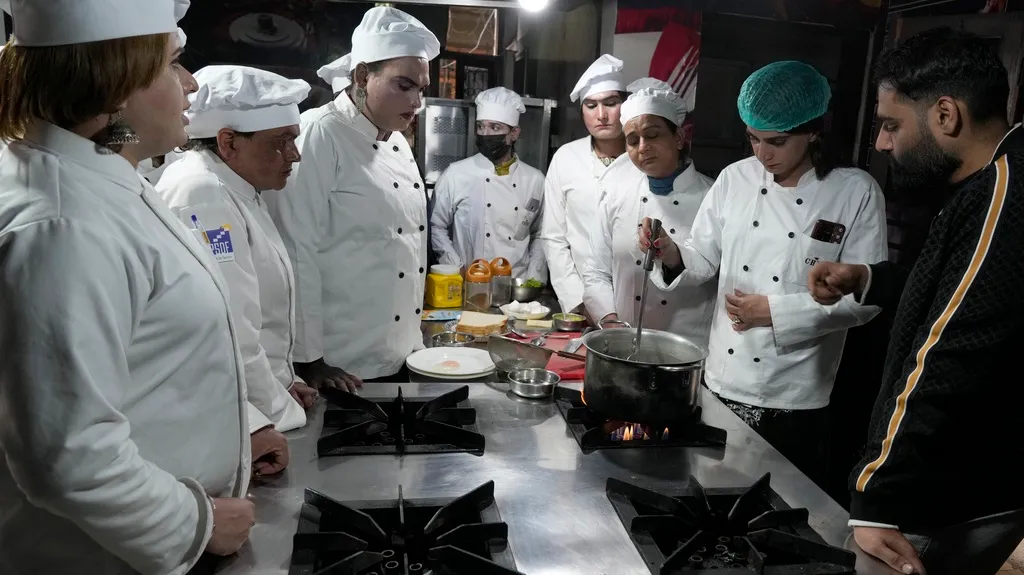December 3, 2011
Californians Pause to Commemorate World AIDS Day
Sylvia Rodemeyer READ TIME: 4 MIN.
With the AIDS epidemic entering its third decade, HIV/AIDS service providers across California commemorated World AIDS Day on Thursday, Dec. 1.
Each ceremony, vigil or commemoration sought to honor those who have succumbed to the virus and to bring attention to the epidemic and what needs to be done to prevent further infections in the future.
There are about 61,700 people with HIV/AIDS in Los Angeles County; 12,900 are unaware of their status. Close to 50 percent of all HIV cases in the county are Latinos.
Bienestar, a non-profit social service organization that promotes the health and well-being of Latinos and other underserved communities in Southern California, is one of the local organizations that hosted a World AIDS Day event. United in Hope/Unidos en Esperanza at Placita Olvera included an ecumenical service in which participants paid tribute to people who have died from AIDS. This event was also an opportunity to raise awareness of the AIDS pandemic and fight against the stigma and discrimination related to this disease.
"After 30 years, it is still vital to continue the education in regards to prevention and the HIV test," said Victor Martinez, director of programs and public affairs at United in Hope/Unidos en Esperanza. "There are other social determinants such as poverty and lack of healthcare that fuels the infection. In addition, stigma and discrimination are still a huge problem to access prevention and care."
In West Hollywood, a breakfast reception was held at the West Hollywood Library Community Room to honor the recipients of the 11th Annual Paul Starke Warrior Awards that recognizes employees or volunteers that have made important contributions in the fight against HIV/AIDS. Guest speaker Dr. Mark Katz discussed the importance of World AIDS Day in light of the 30th anniversary of the epidemic.
Portions of the AIDS Memorial Quilt were on display in the lobby at West Hollywood City Hall alongside HIV/AIDS information. The "They Were Among Us: Reflection on 30 Years of the AIDS Epidemic and the Beginning of the ONE AIDS Memorial Project" reception and program took place at the ONE National Gay and Lesbian Archives later in the day.
The University of California-San Diego commemorated World AIDS Day with a variety of free events that included a viewing of portions of the AIDS Memorial Quilt. The events reflected UC San Diego's "Getting to Zero" theme, language symbolic of the global effort to achieve zero new HIV infections and the end of AIDS-related deaths and stigma against those living with HIV/AIDS.
This year marks the second year that The Long Beach Center has done Oraquick Rapid HIV Testing through funding from the Los Angeles County Health Department's Office of AIDS Programs and Policy. An average of 100 people a month comes to the Center for free HIV counseling and testing services. And those numbers are slowly rising.
"At the Center we are seeing more and more people getting tested and continue to have a high rate of positives for a site like ours," said Ismael Morales, the Center's Director of Health and Services. "With that said, we have a great relationship with local medical facilities like St. Mary's Hospital's CARE Program and Long Beach Comprehensive Medical Center and are able to quickly link newly diagnosed people to medical care."
The Center also hosted an ongoing exhibit by those affected by HIV/AIDS as part of the "Who Do I Test For" art project. A panel discussion with community leaders, youth and adults impacted by HIV/AIDS in Long Beach followed. Panelists included Jeff Hall, who has lived through the epidemic since the first cases of HIV. He said there was a point in his life when losing a friend meant that he had died of AIDS.
Following the panel, a candlelit march from Cherry Avenue to Ocean Boulevard made a visual statement to the city. Oversized AIDS ribbons designed by community businesses and organizations lined the path.
The Bay Area Commemorates World AIDS Day
HIV/AIDS has affected San Francisco more than most other American cities. Over a ten-year period in the 1980s, the epidemic caused the city's population to decrease by 17,000.
The National AIDS Memorial Grove within Golden Gate Park stands as a testament to the epidemic's impact on San Francisco. It hosted the second annual "Light the Grove" on Nov. 30 that proved an evening of remembrance and renewal to commemorate and celebrate their 20th anniversary.
"We have made great strides, but great work still needs to be done," said Executive Director John Cunningham.
The National AIDS Memorial Grove on Dec. 1 also bestowed the Local Unsung Hero Award to the staff of San Francisco General Hospital's Wards 5A, 5B and 86-the original AIDS wards--who tirelessly and compassionately to treat those who were fighting the virus.
"They created a haven of acceptance and compassion at a time when others were calling for isolation and rejection," read the plaque. "They saw fellow human beings where others saw only disease and contagion."
Through the World AIDS Day Scholarship program, the organization awarded three one-year scholarships and one multi-year scholarship to students who represent the future. Three of the students are first generation college students and come from immigrant families.






